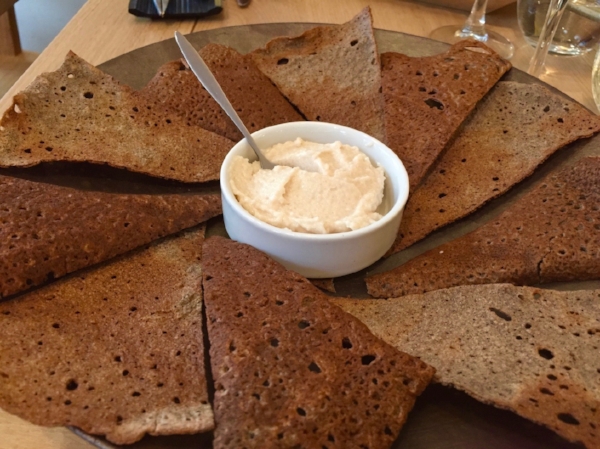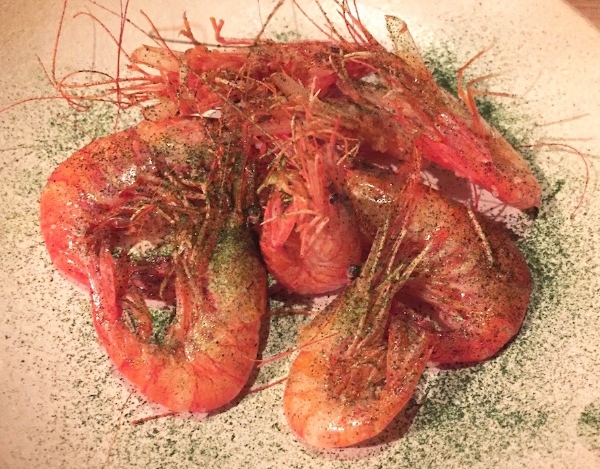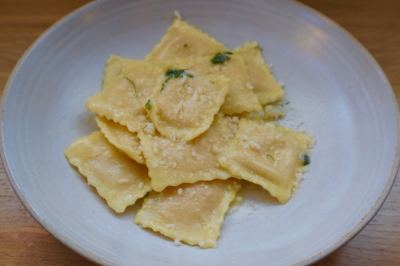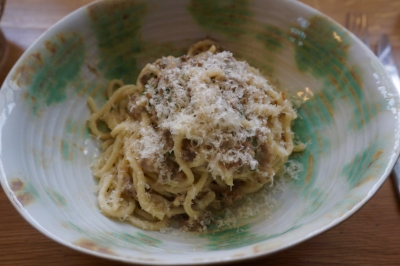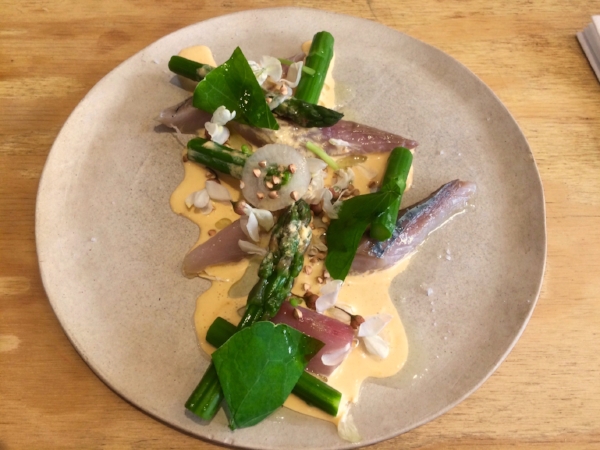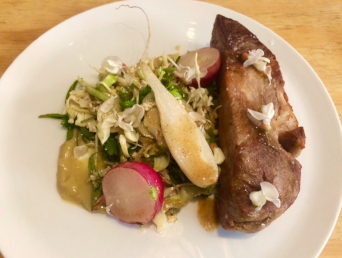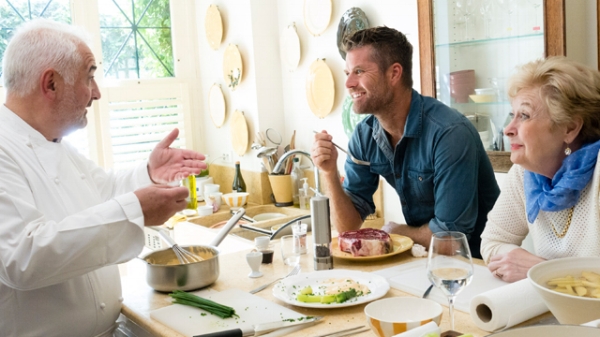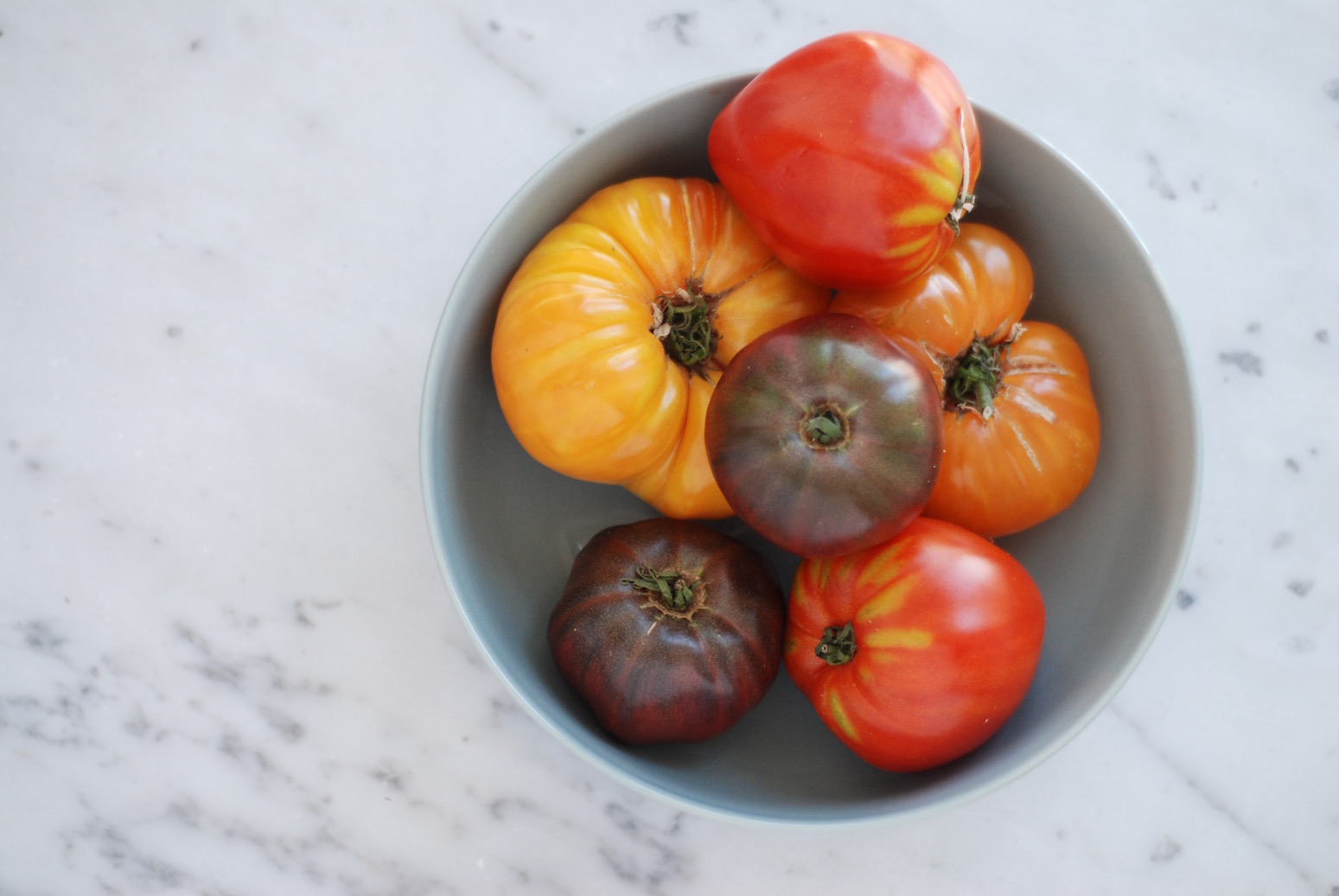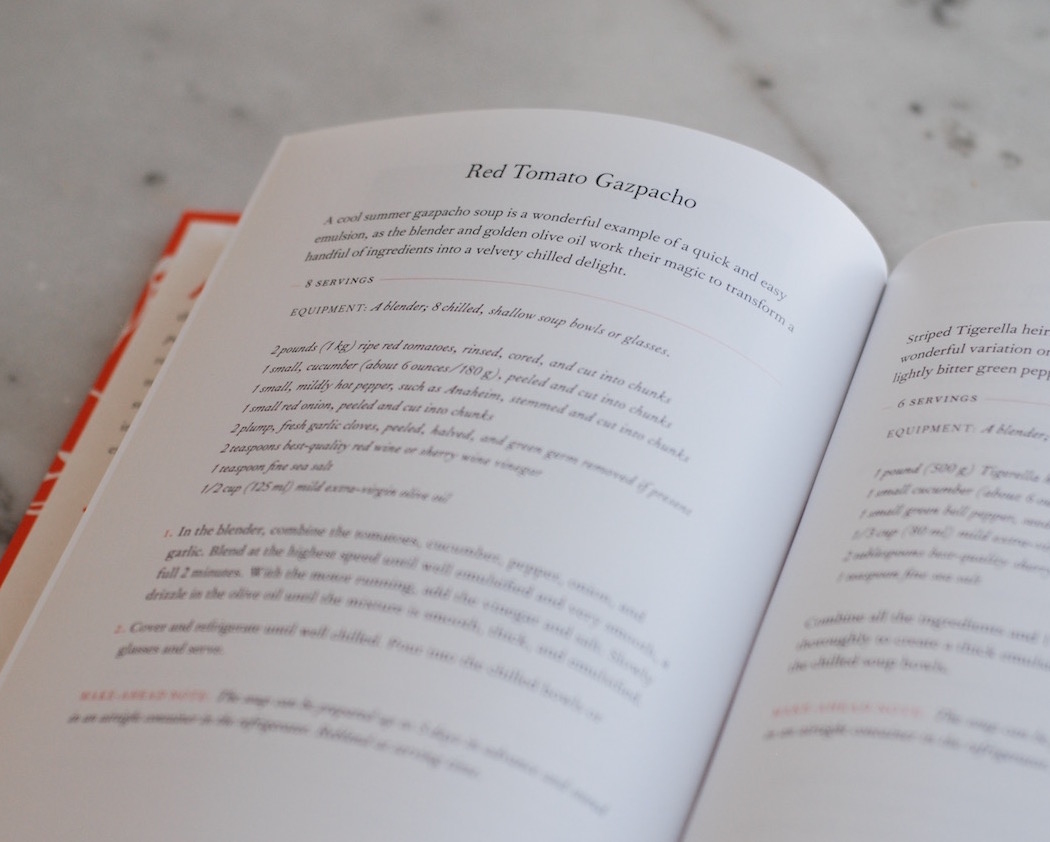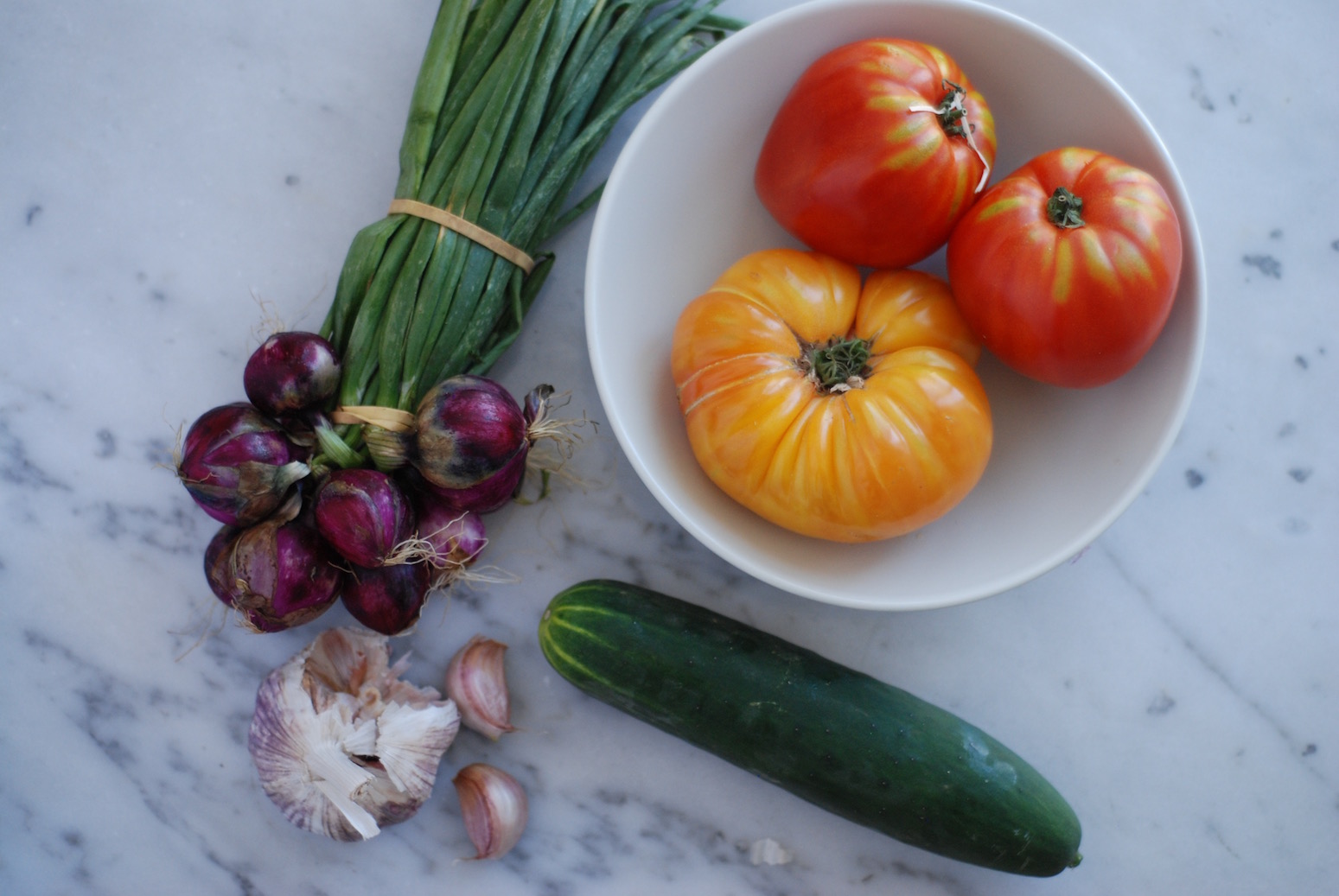In the month of January I like to reflect on the places I have been and the chefs and meals that have touched me over the last 12 months. It's a fun exercise, to remind me of all the talent and bounty I have had the good fortune to experience over the past year. And looking down the list, I see my choices reflect some broad trends in food that are in full swing in both Paris and internationally, notably a conscious return to simplicity, a faithfulness to a concept of terroir and a primary emphasis on sourcing ingredients, and an unrelenting interest in natural and biodynamic wines.
So this is my list of top picks of 2017 – not restaurants that necessarily opened in 2017 but ones in which I enjoyed exceptional meals, where I felt the true character of the chef was really evident in every meal. (In no particular order....)
Sauvage (Paris 6) – an unassuming wine bar whose creative chef has a fundamental instinct for balance and acidity. I was charmed by every dish that I ordered, and amazed about the quality of dishes given the minuscule size of the kitchen.
60 rue du Cherche-Midi | Paris 7 | Tel: +33 6 88 88 48 23 | Métro: Sèvres-Babylone, Rennes or Vaneau
Yoshinori (Paris 6) – A Japanese chef working with impeccable ingredients, and simple yet creative ideas in every dish.
18 rue Grégoire de Tours | Paris 6 | +33 09 84 19 76 05 | Métro: Odéon and Mabillon
Passerini (Paris 12) – For modern Italian fare in an elegant surrounding, you can't do better than Passerini. This is truly satisfying cucina povera in the hands of a master.
65 rue Traversière | Paris 12 | +33 1 43 42 27 56 | Métro: Ledru Rollin
Kitchen Ter(re) - my love for the talents of Chef William Ledueil is no secret, and his third restaurant in the capital is further proof that this man is exceptional.
25 Boulevard Saint Germain | Paris 5 | +33 1 42 39 47 48 | Métro: Maubert-Mutualité
Yam’tcha – Adeline Grattard continues to wow her faithful followers with elegant French cuisine, injected with some Asian-influenced creativity.
121 rue Saint Honoré | Paris 1 | Tel: +33 1 40 26 08 07 | Métro: Louvre-Rivoli
Quinsou – Understated, elegant cuisine from Chef Antonin Bonnet who really knows his produce. His food is earthy, and the ingredients are sourced with care, a favorite find of 2017.
22 rue de l’Abbé Grégoire | Paris 6 | +33 1 42 22 66 09 | Métro: Rennes ou Saint-Placide
Saturne – I had not managed to return to Saturne for many years after initially reviewing them in their early days. But my first visit back there in 2017 led to a flurry of subsequent bookings, I couldn't get enough of Sven Chartier's vibrant, original fare that left me inspired after every meal.
17 rue Notre-Dame des Victoires | Paris 2 | Tel: +33 1 42 60 31 90 | Métro: Bourse
Fulgurances – Two of last year's resident chefs at this novel restaurant that lends its kitchen to upcoming talent, were highlights of my culinary year: Céline Pham and Sebastian Myers. I look forward to tracking their next moves and to see what new talent Fulgurances has to share with us in 2018.
10 rue Alexandre Dumas | Paris 11 | Tel: +33 1 43 48 14 59 | Métro: Rue des Boulets
Table d'Aki – A firm favorite and one that I have come to rely on for exceptional ingredients and precise cooking techniques every time. Chef Akihiro Horikoshi never disappoints.
49 rue Vaneau | Paris 7 | Tel: +33 1 45 44 43 48 | Métro: Vaneau or Saint-François-Xavier
For the full reviews on each of these restaurants, and for more Paris recommendations, get The Food Lover's Guide to Paris iPhone App.




